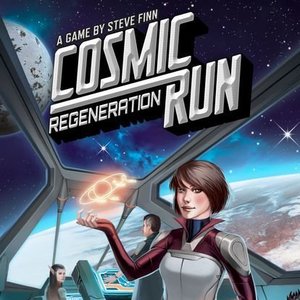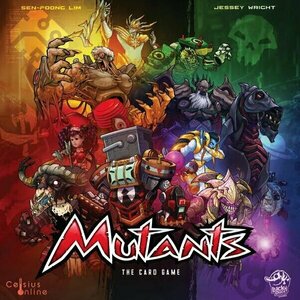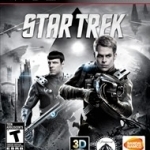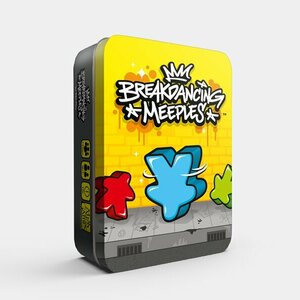
Kahoot! - Play Learning Games
Education and Games
App
Play fun learning games and cool quizzes anywhere and anytime, on your own or with your friends....

Real Pool 3D Plus
Games and Entertainment
App
The best 3D pool game is here! The ultimate addictive fun pool game. Challenge your friends to...

Cosmic Run: Regeneration
Tabletop Game
The year is 2123 and the planet earth is becoming uninhabitable. New powers of interstellar travel...

The Wizard: The Life of Stanley Matthews
Book
"Stanley Matthews taught us the way football should be played". (Pele). "I couldn't believe he was...

The Orchard by HABA - colors & shapes for children
Games and Education
App
Shiny cherries, juicy apples, sweet pears, and glorious plums hang ripe from the trees. But cheeky...

Contract Killer 2
Games and Entertainment
App
Optimized for the iPhone 5 and iPod touch (5th generation) ! You are Jack Griffin, the ultimate...

Circus Maximus
Tabletop Game
"The grandeur and decadence of ancient Rome in your living room! Thrill to the dust of chariot...
BoardGames RomeGames ChariotRacing GladiatorGames RacingGames
Gareth von Kallenbach (980 KP) rated the PlayStation 3 version of Star Trek in Video Games
Jun 19, 2019
Answering a distress signal, the Enterprise crew finds himself set the center of a crisis with galactic repercussions. An evil reptilian race known as the Gorn have stolen the device of immense power and also have unleashed attacks on a Federation station as well as the new Vulcan colony. Not only is the attacking race deadly but they also are employing a technology that allows them to infect and control Federation citizens and officers which doubles the threat posed to the Federation. When the Gorn escape with an extremely powerful device and Vulcan scientists in tow, Kirk and Spock are tasked with saving the day.
The gameplay is similar to that of the Mass Effect series in that it is done from a third person perspective. Players have the ability to use a Tricorder to scan enemies and objects, pathways, and electronic devices such as doors and security systems which often have to be hacked or manipulated to allow gameplay to progress. Players are allowed to primary weapons into grenade types and have to recharge at various centers throughout the game or swap a spent weapon for weapons they find laying about. This is at a nice new wrinkle to the game is not only are Federation and Gorn weapons available players, but having things ranging from sniper rifles to arc guns makes a nice mix from the standard Phaser weapons. There are also various grenades it can be used by the players.
One of the more frustrating aspects of a game for me for the numerous puzzle sequences where systems had to be hacked or otherwise manipulated. While some could be done by ordering Spock or Kirk depending on which player you were controlling to handle it themselves, some had to be done in conjunction with another player. While this was a nice touch to the game, during the final parts they were too frequent and for me undercut the drama and the urgency of the story.
There were also numerous jumping puzzles where players had to hang from ledges and you carefully timed jumps from one obstacle to another. This became frustrating on the PC version as the control system often was very temperamental and allowed access only at certain points of the map. During one co-op session, both live-action players were unable to complete a puzzle, and it required one of us dropping out of the game so that they could rejoin once the remaining player completed the obstacle course.
I appreciate the deviation from standard run and gun and how the developers were attempting to incorporate a true sense of co-op play by requiring the other player to be little more than backup firepower. However, it does get a bit frustrating when somebody is unable to complete a jump and you are forced to repeat a segment over and over until it is done correctly thanks to the games checkpoint save system.
I really enjoyed the detail levels of the game especially being able to explore the Enterprise and other environments in great detail. One segment required us to use limited range portable transporters to tag and transport one another to various spots on a damage space station. This this was lots of fun and in my opinion really captured the essence of Star Trek as did the brash and bold gameplay style of Kirk compared to the methodical and efficient gameplay style of Spock.
While there were some frustrating moments the game was very enjoyable and with over 10 hours of gameplay did offer a very rewarding experience for Star Trek fans. I do think that gamers who are more casual fans of the series may not be as forgiving with some of the issues I noted in the game but as franchise games go this was a very enjoyable effort.
Graphically the facial animation and lip-synch of the characters was a bit off and dated but elements of the ship and locales were extremely detailed and very enjoyable to look at and interact with. There are some fantastic lines in the game especially some of the clips by Scotty and Dr. McCoy which really showed the effort the game designers talk to capture the essence of the game and its characters and to do their best to put players inside a true Star Trek adventure.
While it is not a perfect game and does have some flaws from the technical and gameplay side of things, it is one of the better Star Trek games ever released and does offer a very enjoyable experience for Star Trek fans as long as they are willing to temper their expectations going in.
http://sknr.net/2013/04/29/star-trek-the-video-game/
Purple Phoenix Games (2266 KP) rated Breakdancing Meeples in Tabletop Games
Oct 18, 2021
Breakdancing Meeples is a real-time game in which players are trying to amass the most Crowd Appeal (VP) by directing their dance crews to perform the baddest and most impressive dance routines of all time. To setup the game, give each player 6 Meeples, 6 cubes, and their starting Routine cards in their chosen color. Shuffle the remaining Routine cards to form a draw pile, open up the Breakdancing Meeples app (or just get a one-minute timer ready) and the dance battle is set to begin!
Each round is broken into two phases – Dance Off, and Remix. In the Dance Off, players will have one minute to roll their Meeples (yes, you read that correctly – rolling Meeples) to complete as their crew’s Routines as many times as they can to earn Crowd Appeal. When rolling Meeples, there are 4 stances in which the Meeples can land: Feet, Side, Head, or Back. These positions correspond to stances on your Routine cards. If you roll a Meeple in a stance that matches one on your card, you may place that Meeple on that card, moving you closer to completing that Routine. Once all stances have been filled on a Routine, you earn a Crowd Appeal cube, placing it on the leftmost available square at the bottom of that Routine card. You may then pick up all the Meeples from that card, and they are back in play. It is important to note that once a Meeple has been placed on a Routine, it may not be removed until the Routine is finished! If you are unable, or unwilling, to place a Meeple on a Routine card, you may reroll any unused Meeples. Continue rolling and placing your Meeples in this fashion until the one-minute timer runs out. When time has been called, all players will count up their Crowd Appeal – the points listed at the bottom of their Routine cards that are covered by cubes, signifying a successful rep of that Routine. The Dance Off phase is now over.
Now comes the Remix phase. Reveal as many face-up cards from the Draw deck as there are players plus one. Beginning with the player who has the lowest Crowd Appeal, players will take turns selecting a new Routine card to add to their repertoire for the next round. Players may only ever have 3 Routine cards, so in future rounds, players can choose to discard from their play area in favor of a new card. A new round now begins with another Dance Off, and continues as above until the fourth Dance Off has been completed. Players then tally their total Crowd Appeal, and the player with the highest score is the winner! Dare I say, the Dancing Queen? No? Ok…
With a fun theme and simple gameplay, does Breakdancing Meeples hold up? I would have to say yes. First let’s talk about the simplicity of gameplay. All you have to do is roll Meeples and match stances to cards. It may not sound exciting when stated that way, but add in the one-minute timer and suddenly you’ve got a more engaging and action-based game. Throw the Meeples into the mix (literally, in this game) and their disproportionate limbs and unique silhouettes provide an extra challenge in getting them to roll and land exactly as you want them to.
Another neat element of this game is the addition of Rally and Special cards to the Draw deck. Rally cards are purchased (with Crowd Appeal) in the Remix phase, and are then attached to one of your existing Routines. In the next Dance Off, when rolling your Meeples, Rally cards can provide extra Crowd Appeal points once their conditions have been met. These cards may cost some end-game points, but they could earn you much more if the conditions are right. It’s a risk, and adds some suspense to the gameplay. Special cards grant the player a ‘wild’ dancer. If you roll 2 Meeples in the same stance, you may exchange them to a single dancer in your chosen stance. Rally and Special cards can be removed from the game for a more simple gameplay, if playing with younger players for example, but add in an extra twist to the chaos of the real-time limitations.
Is Breakdancing Meeples my favorite game? Nope. But it’s a cute, fun, and fast little game that I can see myself pulling out often as a filler, or even a game to introduce newer gamers to the hobby. It is lighthearted in nature, with a unique theme, and it just is fun to play. I am glad that I bought this game on a whim, and I definitely will be keeping it in my collection. With that said, Purple Phoenix Games gives it a hoppin’ 7 / 12. Check it out, you might be surprised!


